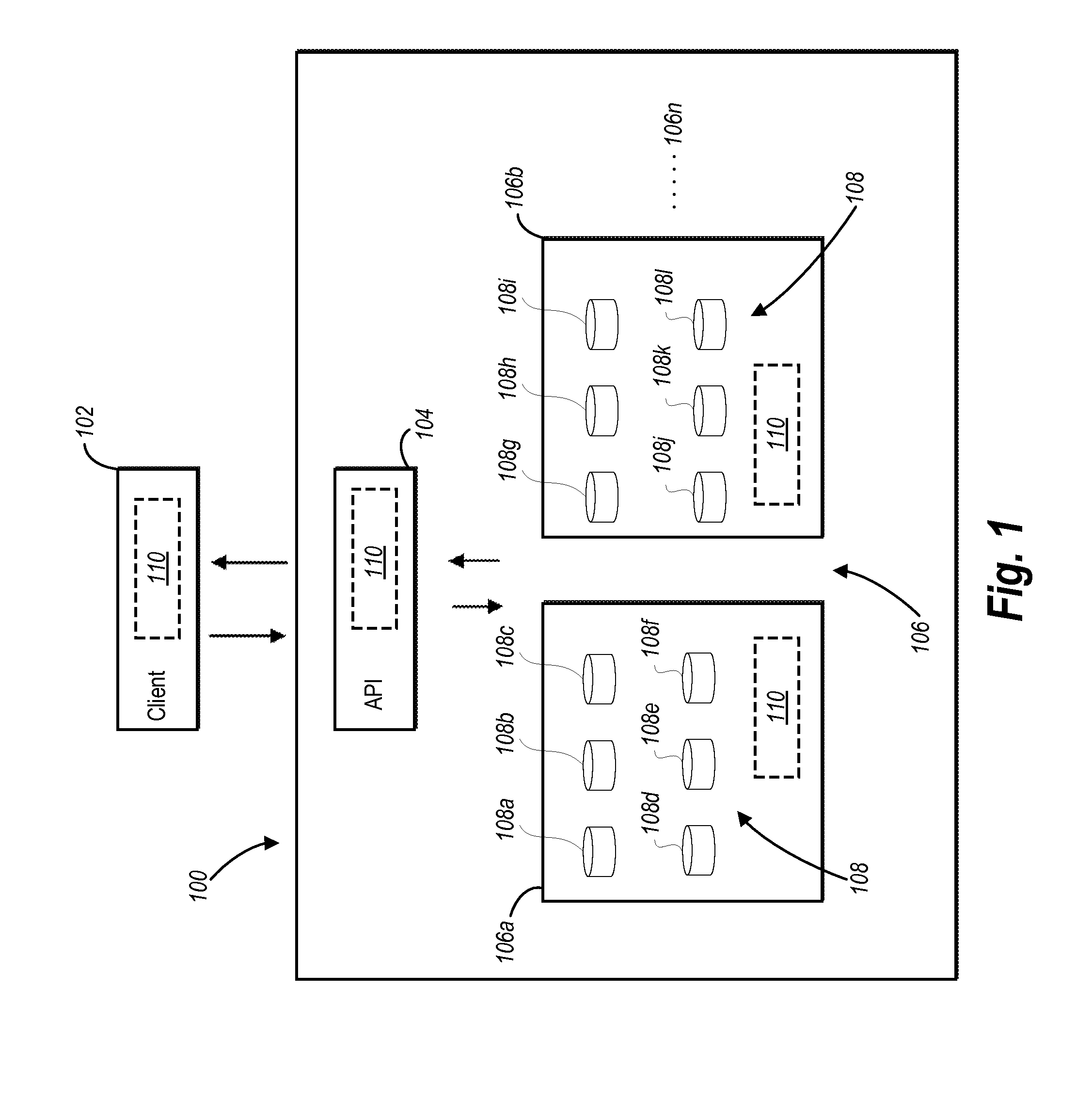Managing a distributed database across a plurality of clusters
- Summary
- Abstract
- Description
- Claims
- Application Information
AI Technical Summary
Benefits of technology
Problems solved by technology
Method used
Image
Examples
Embodiment Construction
[0026]One or more embodiments include a multi-cluster database management system that allows for management of a dataset across a plurality of clusters through the use of cluster partitions. Each cluster partition is assigned a portion of the data of multi-cluster database. The multi-cluster database management system divides the cluster partitions among the clusters of the multi-cluster database to evenly distribute the data across the clusters. Upon the addition or removal of a cluster, the multi-cluster database re-assigns or re-distributes the cluster partitions among the clusters, which causes an even redistribution of data.
[0027]As used herein, the term “cluster partition” refers to a virtual data storage location that is used to map data to a physical storage location within a multi-cluster database. In particular, a cluster partition is assigned a key identifier or a range of key identifiers of a cluster key space. All the key identifiers making up the cluster key space are ...
PUM
 Login to View More
Login to View More Abstract
Description
Claims
Application Information
 Login to View More
Login to View More - R&D
- Intellectual Property
- Life Sciences
- Materials
- Tech Scout
- Unparalleled Data Quality
- Higher Quality Content
- 60% Fewer Hallucinations
Browse by: Latest US Patents, China's latest patents, Technical Efficacy Thesaurus, Application Domain, Technology Topic, Popular Technical Reports.
© 2025 PatSnap. All rights reserved.Legal|Privacy policy|Modern Slavery Act Transparency Statement|Sitemap|About US| Contact US: help@patsnap.com



